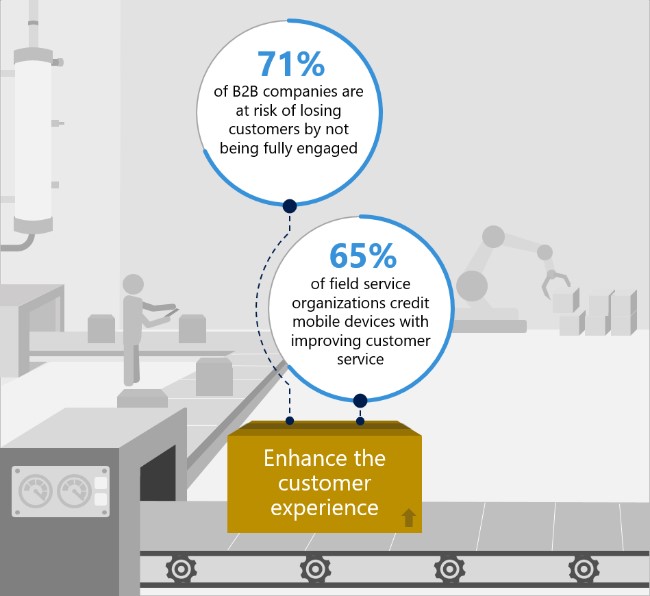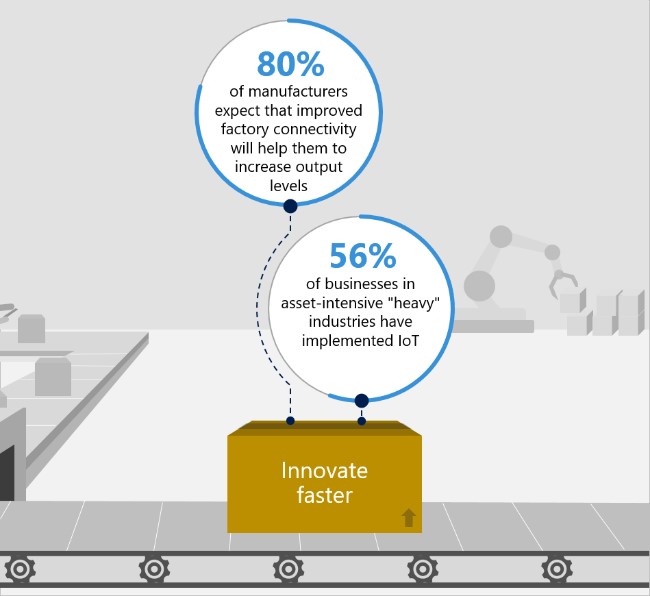How the Right CRM Tool Can Transform the Manufacturing Industry
How the Right CRM Tool Can Transform the Manufacturing Industry
The future of manufacturing will be defined by the technology companies are investing in today. But before they choose the solutions that are right for them, they have to first understand their goals and problems they are trying to solve.
Let’s take a closer look at what the manufacturing and supply chain industries need to do to not only survive digital transformation but thrive within it. Here are six things supply chain leaders need to consider to enables transformation in their industry.
1. Develop a data-driven culture
You need to understand your business more deeply, from customer usage through supply chain sourcing and production - and that starts with understanding your data. With IoT-enabled parts, assets, and products, manufacturers can now gain the insights needed to innovate. Data from connected products and equipment can empower developers, engineers, and technicians to collaborate. For example, teams can identify over-engineered or faulty components and track product usage in the field to improve future designs.
When a leading information and communication technology company implemented remote monitoring, they decreased time to production as well as accelerated the cycle of innovation using a data-driven approach.
2. Optimize supply chain operations through better visibility and collaboration
So you HAVE the data, but you need a way to collect, integrate, and visualize it to gain better visibility into your operations from production to sales.
For example, one of the world’s largest industrial automation firms found that by automating the collection and analysis of data from remote installations across the petroleum supply chain, they strengthened their competitive advantage with a faster time to market. Improved access to supply chain data is also the basis for better collaboration across production, supply, service, and sales.

3. Streamline the management of assets, products, and production
Using the insight from the data that you now understand, you need a way to better manage how you produce what you produce – unifying process oversight with real-time insights, using connected devices to monitor and resolve issues remotely.
One leading manufacturer of industrial robots enabled 24-hour continuous uptime using this approach. The additional insights into production and customer usage also allow manufacturers to provide value-added services like ongoing monitoring and proactive support.

4. Engage your customers in more meaningful ways
You need to engage with your customers in a personalized way that matters to them. This approach is built on a combination of predictive analytics, the ability to deliver value-added services at scale, and guided or self-directed service that’s relevant to customer needs.
With the implementation of a connected platform for sales through service, one leading home technology manufacturer not only solved potential problems remotely before customers ever felt the impact, but provided custom differentiated offerings based on unique customer usage and purchasing history.
5. Transform service centers into profit centers
You can improve service quality and margins by offering remote monitoring and proactive maintenance services that supplement break/fix support – which is now more available than ever thanks to the ever-decreasing cost of IoT sensors, sophisticated mobile devices, and cloud-based data aggregation.
A leading tire service and manufacturing company found that by combining customer records, technician availability, and back-end inventory in a single mobile-friendly system, it could provide a seamless user experience as well as improve its service delivery.

6. Empower employees to work more effectively
You need a way to enable your technicians to better understand not only the job in front of them but of other similar and successful field service engagements. This goes hand-in-hand with empowering service agents to provide instant feedback, using machine learning to find and follow similar cases for successful troubleshooting, and scheduling a visit or evaluation.
A leading auto manufacturer wanted to save money by unifying their siloed customer service and customer engagement while providing employees with better tools to understand customer sentiment. To accomplish this, it implemented a system to connect production and project management with their customer relationship management systems in order to deliver personalized service and recommendations to their customers.
How Microsoft Dynamics 365 Can Help
For manufacturers, Microsoft Dynamics 365 ends the artificial divide between CRM and ERP systems and supplements necessary capabilities with rich analytics, embedded intelligence, and the convenience people expect from consumer apps on their phone or tablet. Dynamics 365 unites the front office and the back office with a single end-to-end system for managing every aspect of your business, at the pace and scale that’s right for you.
Digital transformation isn’t accomplished overnight and leveraging current investments is a key component of any successful approach. With the right CRM tool, you can optimize across all your processes while laying the foundation for connecting advanced technology in the future.


SHARE